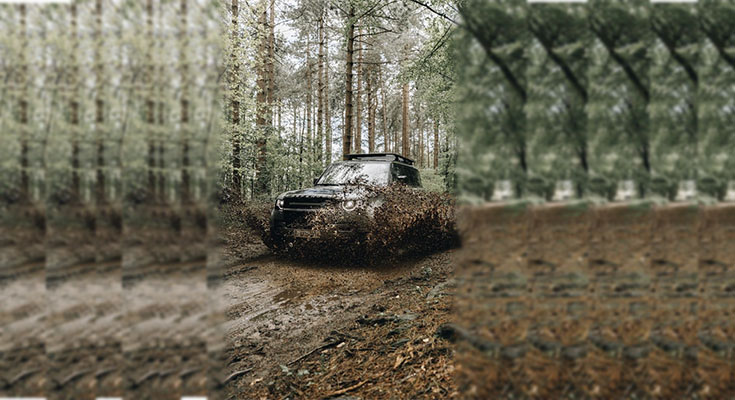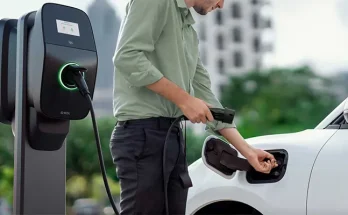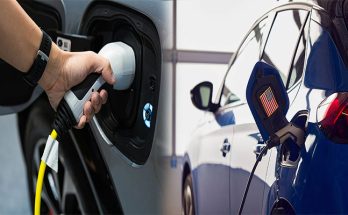Ready for an adventure like no other? Welcome to the world of vehicle overlanding, where the roads less traveled lead to breathtaking landscapes, hidden gems, and unforgettable experiences. Picture yourself behind the wheel, exploring rugged terrains that few dare to tread, and immersing yourself in the beauty of the great outdoors. Whether you’re an adrenaline junkie seeking thrilling off-road escapades or a nature lover yearning for a deeper connection with the world around you, vehicle overlanding offers the perfect blend of freedom, adventure, and exploration. In this guide, we will dive into the essentials of vehicle overlanding, from choosing the right vehicle and equipment to planning epic routes and embracing the nomadic lifestyle. So, buckle up and get ready to embark on a journey that will ignite your wanderlust and leave you longing for more. The world of vehicle overlanding awaits, and it’s time to unleash your inner explorer.
What is vehicle overlanding?
Vehicle overlanding is a form of off-roading that involves traveling long distances in a self-sufficient vehicle, often equipped with camping gear and supplies. Unlike traditional camping or road trips, overlanding focuses on venturing into remote and challenging terrains, away from the comforts of civilization. It’s about pushing the boundaries of exploration and self-reliance while immersing oneself in the natural beauty of the surroundings. Whether it’s traversing deserts, crossing rivers, or conquering mountain trails, vehicle overlanding allows adventurers to go where few have gone before, experiencing the thrill of the unknown and discovering hidden corners of the world. Overlanding is not just a means of transportation; it’s a lifestyle that embraces freedom, adventure, and the desire to connect with nature on a deeper level.
Over the years, vehicle overlanding has gained significant popularity among outdoor enthusiasts and adventure seekers. People are increasingly drawn to the idea of escaping the crowded cities and exploring the untouched landscapes that lie beyond. The sense of freedom and self-sufficiency that overlanding provides is unmatched, allowing individuals to disconnect from the fast-paced modern world and reconnect with nature. Vehicle overlanding provides a unique opportunity to challenge oneself, both mentally and physically, as one navigates through rugged terrains and adapts to ever-changing landscapes. It’s a chance to escape the mundane and embark on a journey that promises excitement, personal growth, and a renewed appreciation for the world around us.
Benefits of vehicle overlanding
Vehicle overlanding offers a multitude of benefits that set it apart from other forms of travel and outdoor activities. Firstly, it allows for a level of freedom and flexibility that is hard to achieve with traditional travel methods. With an overlanding vehicle, you have the ability to go wherever your heart desires, without being tied down to hotel reservations or flight schedules. You can change your plans on a whim, explore off-the-beaten-path destinations, and stay in remote locations that offer unparalleled tranquility. This freedom to roam is a fundamental aspect of overlanding and is what makes it so appealing to adventure seekers. Embark on epic adventures and conquer challenging terrains with vehicles like the timeless Range Rover Classic, an ideal vehicle for thrilling overlanding expeditions.
Secondly, vehicle overlanding provides a unique opportunity to connect with nature and experience the great outdoors in a way that is not possible with other forms of travel. Instead of simply passing through a place, overlanders have the chance to truly immerse themselves in their surroundings. They can wake up to the sound of birds chirping, breathe in the crisp mountain air, and witness stunning sunsets in remote locations. Overlanding allows for a deeper appreciation of the natural world and fosters a sense of stewardship towards the environment. It encourages responsible travel and a commitment to preserving the places we explore for future generations.
Lastly, vehicle overlanding offers a sense of adventure and exploration that is hard to replicate in other activities. The thrill of conquering challenging terrains, the joy of discovering hidden gems, and the camaraderie among fellow overlanders create unforgettable memories and experiences. Overlanding pushes individuals out of their comfort zones, encouraging personal growth and self-discovery. It builds resilience, problem-solving skills, and a sense of self-reliance. It’s a journey that challenges both the mind and body, leaving participants with a profound sense of accomplishment and a thirst for more.
Essential equipment for vehicle overlanding
When it comes to vehicle overlanding, having the right equipment can make all the difference between a successful adventure and a frustrating experience. Here are some essential items that every overlander should consider:
- Off-road capable vehicle: Choosing the right vehicle is crucial for vehicle overlanding. Look for a 4×4 vehicle with high ground clearance and good off-road capabilities. Popular choices include SUVs, trucks, and modified Jeeps. The vehicle should be able to handle rough terrains, steep inclines, and river crossings.
- Camping gear: Overlanding often involves camping in remote locations, so having the right camping gear is essential. Invest in a sturdy tent that can withstand various weather conditions, a comfortable sleeping bag, and a reliable camping stove. Don’t forget essentials like cooking utensils, water storage containers, and a portable toilet.
- Recovery gear: Off-roading can sometimes lead to getting stuck in mud, sand, or other challenging conditions. It’s important to have recovery gear on hand, such as a winch, recovery straps, and a shovel. These tools can help you get out of sticky situations and continue your journey safely.
- Navigation tools: When exploring remote areas, it’s crucial to have reliable navigation tools. Invest in a GPS device specifically designed for off-road use, as well as good old-fashioned maps and a compass. These tools will help you stay on track and navigate unfamiliar terrain.
- Communication devices: In case of emergencies or when traveling in areas with no cell service, having communication devices is essential. Consider investing in a satellite phone or a two-way radio to stay connected with the outside world and call for help if needed.
- First aid kit: Accidents can happen anywhere, so having a well-stocked first aid kit is essential. Make sure your kit includes bandages, antiseptic ointment, pain relievers, and any necessary prescription medications. It’s also a good idea to take a first aid course to learn basic medical skills.
Remember, this is just a starting point, and the specific equipment you need may vary depending on your destination and personal preferences. It’s important to do thorough research and understand the unique challenges of each overlanding trip to ensure you have the necessary equipment to stay safe and comfortable.
Planning your vehicle overlanding adventure
Planning is a crucial part of any successful vehicle overlanding adventure. Here are some key steps to consider when planning your trip:
- Choose your destination: The first step in planning your overlanding adventure is choosing where you want to go. Do you dream of exploring the rugged landscapes of the American Southwest or venturing into the wilds of Patagonia? Research different destinations, consider factors such as weather and terrain, and choose a place that aligns with your interests and skill level.
- Research the route: Once you have chosen your destination, it’s time to research the route. Look for established overlanding routes in the area or create your own based on the sights and experiences you want to have. Consider factors such as road conditions, fuel availability, and camping options along the way. It’s also a good idea to read trip reports and connect with other overlanders who have traveled in the area to gather valuable insights.
- Prepare a detailed itinerary: A detailed itinerary will help you stay organized and ensure you make the most of your time on the road. Plan your daily driving distances, highlight points of interest, and allocate time for rest and relaxation. Keep in mind that overlanding is not just about reaching your destination; it’s about the journey itself. Be flexible and open to unexpected detours and new experiences along the way.
- Check vehicle and equipment: Before setting off on your overlanding adventure, it’s important to thoroughly check your vehicle and equipment. Ensure that your vehicle is in good working condition, with all necessary maintenance and repairs done. Test your camping gear, check for any missing or damaged items, and pack spare parts if needed. Don’t forget to replenish your emergency supplies, such as extra fuel, water, and food.
- Consider safety precautions: Safety should always be a top priority when overlanding. Familiarize yourself with the rules and regulations of the areas you will be traveling through, including any permit requirements or restrictions. Share your itinerary with a trusted friend or family member and establish regular check-in points. Take note of emergency contact numbers and nearby medical facilities. It’s also important to have a plan in case of extreme weather conditions or other emergencies.
By taking the time to plan and prepare for your overlanding adventure, you’ll be able to make the most of your journey and ensure a safe and enjoyable experience. Remember, overlanding is all about embracing the unknown, exploring new places, and creating memories that will last a lifetime.
Safety tips for vehicle overlanding
While vehicle overlanding is an exhilarating adventure, it’s important to prioritize safety to ensure a smooth and enjoyable journey. Here are some essential safety tips for your overlanding adventure:
- Know your vehicle: Before setting off, familiarize yourself with the capabilities and limitations of your vehicle. Understand how to engage and disengage the 4×4 system, use the differential lock (if applicable), and adjust tire pressure for different terrains. Practice driving on different surfaces and get comfortable with your vehicle’s handling.
- Drive cautiously: Off-roading can be unpredictable, so it’s important to drive cautiously and adapt to the terrain. Slow down on rough or slippery surfaces, and maintain a safe distance from other vehicles. Avoid sudden acceleration, braking, or steering inputs that can cause your vehicle to lose traction. Be mindful of your surroundings and anticipate potential hazards.
- Prepare for emergencies: Always be prepared for emergencies by carrying essential safety equipment. This includes a first aid kit, fire extinguisher, spare tire, tire repair kit, jack, and a basic tool kit. It’s also a good idea to carry extra food, water, and blankets in case you get stranded.
- Stay on designated trails: One of the principles of responsible overlanding is to stay on designated trails and respect the environment. Avoid off-roading in sensitive areas, such as protected wildlife habitats or fragile ecosystems. Stick to established tracks and avoid creating new tracks that can cause erosion and damage to the landscape.
- Practice Leave No Trace: Leave No Trace is a set of principles that promote responsible outdoor ethics. When overlanding, be mindful of your impact on the environment. Pack out all trash, dispose of waste properly, and minimize your campfire impact. Respect wildlife and keep a safe distance, never feeding or approaching them.
- Be prepared for weather conditions: Weather conditions can change rapidly, especially in remote areas. Check the weather forecast before heading out and be prepared for extreme conditions. Pack appropriate clothing, including rain gear and warm layers. Be aware of potential hazards such as flash floods or snowstorms and adjust your plans accordingly.
- Travel with a buddy: Overlanding with a buddy or in a group is not only more fun but also safer. Having someone to help in case of emergencies, share driving duties, and provide support can make a big difference. If traveling alone, make sure to inform someone of your plans and establish regular check-in points.
Remember, safety should always be your top priority when overlanding. By following these safety tips and using common sense, you can enjoy your adventure to the fullest while minimizing risks.
Best destinations for vehicle overlanding
Vehicle overlanding opens up a world of possibilities when it comes to destinations. From rugged mountains to vast deserts and dense forests, there are countless places waiting to be explored. Here are some of the best destinations for vehicle overlanding:
- The American Southwest: The Southwest region of the United States is a paradise for overlanders. From the iconic trails of Moab, Utah, to the majestic landscapes of Arizona’s red rock country, there is no shortage of breathtaking scenery and challenging terrains. Explore the Grand Canyon, Monument Valley, and the vast expanses of the Mojave Desert.
- South America: South America offers a diverse range of overlanding opportunities, from the rugged Andes Mountains to the lush jungles of the Amazon. Travel through the stunning landscapes of Patagonia, visit the ancient ruins of Machu Picchu in Peru, or experience the vibrant culture of Brazil.
- Africa: Africa is a continent of unparalleled beauty and adventure. Explore the vast savannahs of East Africa, witness the wildebeest migration in the Serengeti, or embark on a journey through the deserts of Namibia. Africa offers a unique overlanding experience, with opportunities to see wildlife up close and immerse yourself in rich cultural traditions.
- Australia: The vast and diverse landscapes of Australia provide endless opportunities for overlanding. Explore the rugged trails of the Australian Outback, visit the iconic landmarks of the Great Ocean Road, or venture into the remote wilderness of the Kimberley region. Australia offers a true sense of adventure and a chance to experience the raw beauty of the land down under.
- Europe: While Europe may not immediately come to mind when thinking of overlanding, it offers a surprising number of off-road adventures. Explore the rugged landscapes of Iceland, venture into the remote corners of Scotland’s Highlands, or take on the challenging trails of the Balkan Peninsula. Europe combines history, culture, and stunning scenery, making it an ideal destination for overlanding.
These are just a few examples of the incredible destinations that await vehicle overlanders. Whether you’re seeking breathtaking landscapes, wildlife encounters, or cultural immersion, there is a destination out there that will fulfill your wildest overlanding dreams.
Vehicle overlanding communities and resources
The vehicle overlanding community is a tight-knit and supportive group of individuals who share a passion for adventure and exploration. Connecting with fellow overlanders can provide valuable insights, advice, and a sense of camaraderie. Here are some resources and communities to help you get started:
- Overland forums: Online forums such as Expedition Portal, Overland Bound, and iOverlander are popular platforms for overlanders to connect, share trip reports, and exchange tips and advice. These forums also provide a wealth of information on vehicle modifications, gear recommendations, and route planning.
- Social media communities: Joining vehicle overlanding groups on platforms like Facebook and Instagram can be a great way to connect with like-minded individuals.





